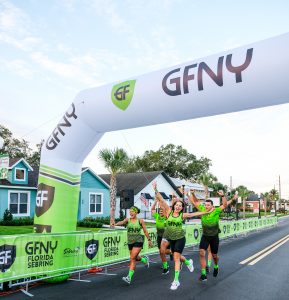This week in the Training Guide, Coach Christian talks about simple performance testing to monitor improvements.
A good training program should be built on hard data and evidence. One of the most important sets of data points you can have as a cyclist is testing data to track your performance over time. You want to know your training is working, you want to know if it’s not working, and you also want to be able to look back and see how you’ve progressed as an athlete over time.
Yet, I’ve come to realize many athletes don’t have a solid, repeatable performance test that they use to measure their form. These tests don’t need to be complicated: yes, lab data or complicated power testing protocols have their place. But today, we’re going to suggest some simple performance tests that anyone can do multiple times during the season to track their progress.
Power Testing
If you have a power meter or a smart trainer, the best combination of simplicity, repeatability and useful data is to simply do a long, well-paced time trial effort every time you want to test your form.
Twenty minute tests are most common, and I think these are fine for most athletes (note: please don’t calculate your FTP by using this number and multiplying by .95, but we can get into that another day).
The most important thing is to always repeat the test under similar conditions: if you use a hill, always use the same or a similar hill. If you use your trainer once, use it always. If you use a flat road, continue using a flat road.
Power output can vary given terrain, so trying to compare an indoor test to an outdoor uphill test is foolish. You’ll only get bad data and trick yourself into seeing improvement when there is none.
Even if you don’t own a power meter, you may have some options for power testing. Many areas have cycling gyms or studios which have smart trainers that measure power output: consider booking a session every 6-12 weeks at one of these to do your testing in an accurate, repeatable way.
Hill-Climb Testing
If you don’t have a power meter, the next best thing is a hill-climb test. This is an age-old practice: if you go to any town where lots of pro riders live, you’ll find there’s a local testing climb where everyone goes to check their form. Monte Serra in Lucca, La Madone on the Cote d’azur, or Rocacorba in Girona are all examples of climbs that are famous not for their use in races, but for being famous test climbs.
If you don’t have a power meter and are using a hill, you can be a bit more flexible with time: ideally a 20-30 minute climb is perfect, but if you only have shorter climbs available, something as short as 10 minutes is fine. I would suggest not going below 10 minutes as the anaerobic contribution starts to become too great.
For outdoor testing, it’s even more important to guarantee similar conditions: when you do a test track the clothing you wore, bottles you carried, and atmospheric conditions that day. Avoid especially windy days that will give you bad data.
Flat TT Testing
The last option for any cyclist should be tracking improvement on a flat TT course. This is suitable if you don’t have a power meter or a local climb to test on, but it’s not ideal.
For flat TT testing, you should choose a loop or an out-and-back to help eliminate the effects of wind. A 20-30 minute course is ideal.
With flat TT testing it’s really important to try to match atmospheric conditions: go on days with low wind-speed and similar conditions to your last test.
If you live somewhere with cold winters, you’ll go slower in winter due to baggier clothes and higher air density. Because of that, you may have to compare tests by time of year: compare winter tests to winter tests, and summer tests to summer tests. You’ll also need far larger improvements to be confident that you’ve actually gotten faster and didn’t just have faster conditions.
Conclusion
The goal with performance testing is to track improvement over time and make sure your training plan is working. Otherwise, you’re only going by feel, and have no real idea if what you’re doing is working.
There’s a number of ways to test, as we’ve laid out above, but it’s worth doing your best to seek out power testing or using a long climb. Flat TT testing should be a last option.
Be sure to record your test data somewhere where you won’t lose it. Training Peaks or Strava is a great way to do this. Include important data so that you can repeat the test under the same or similar conditions.
Remember, you can find the Training Center Podcast wherever you listen to your podcasts:











